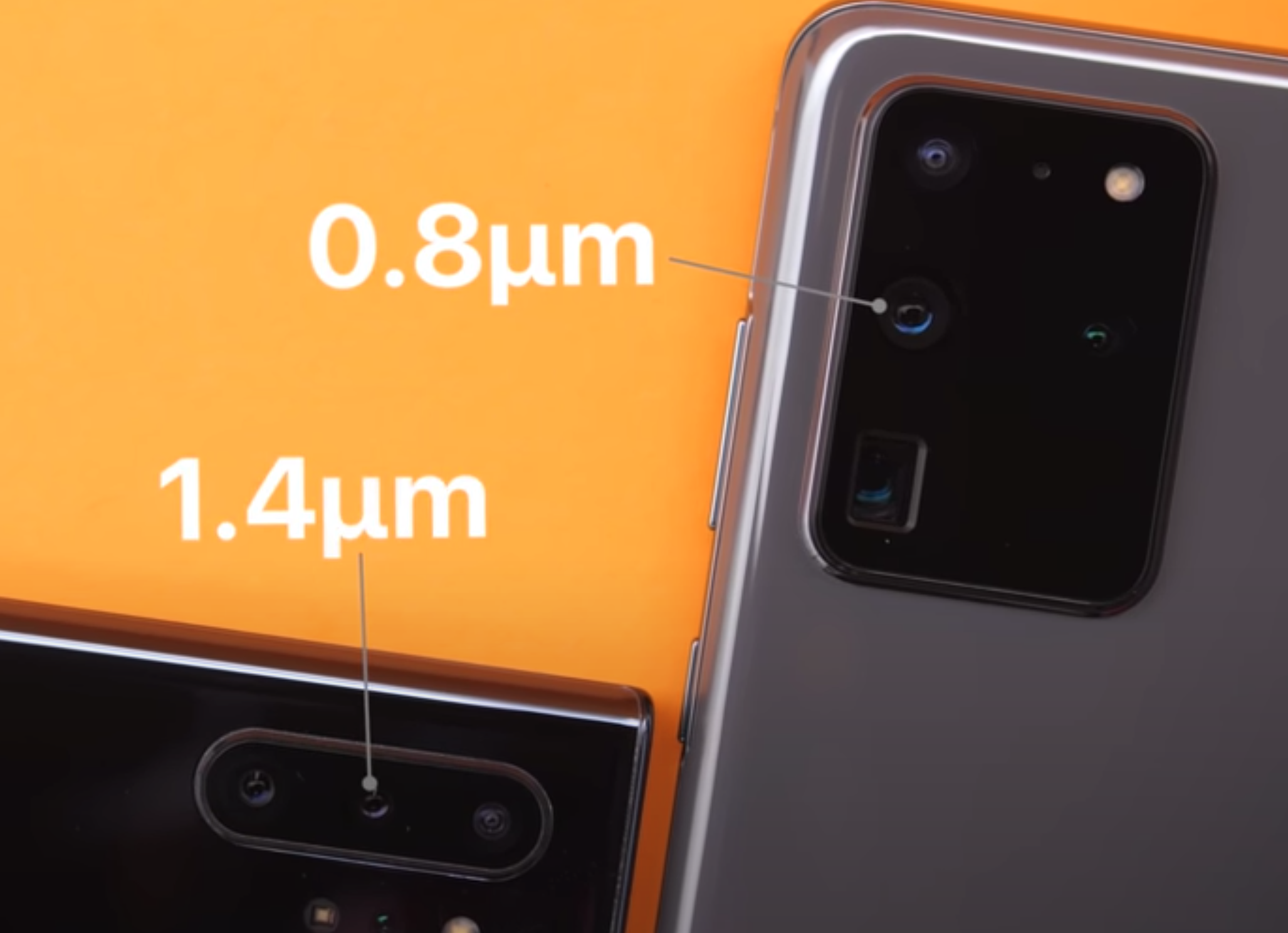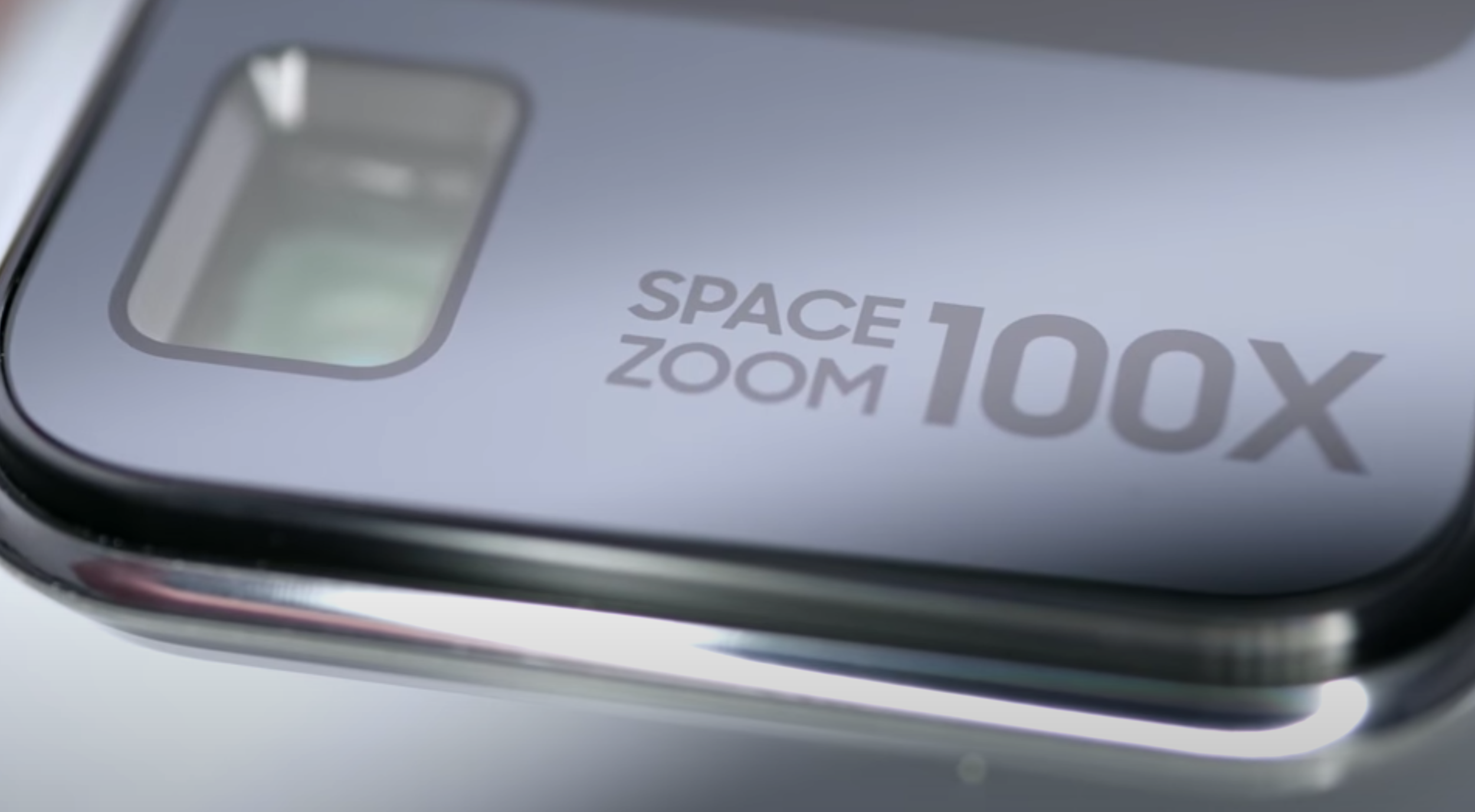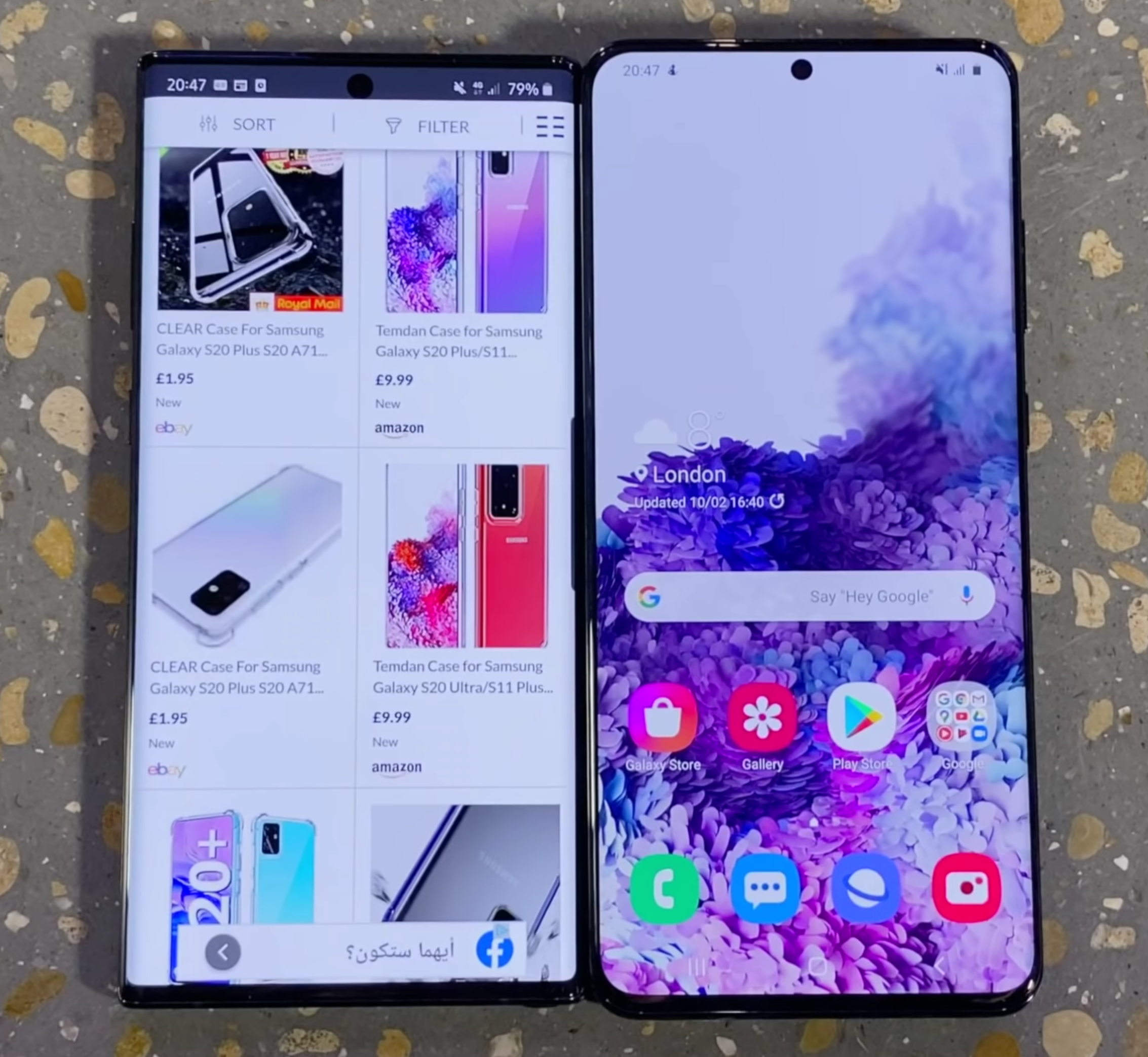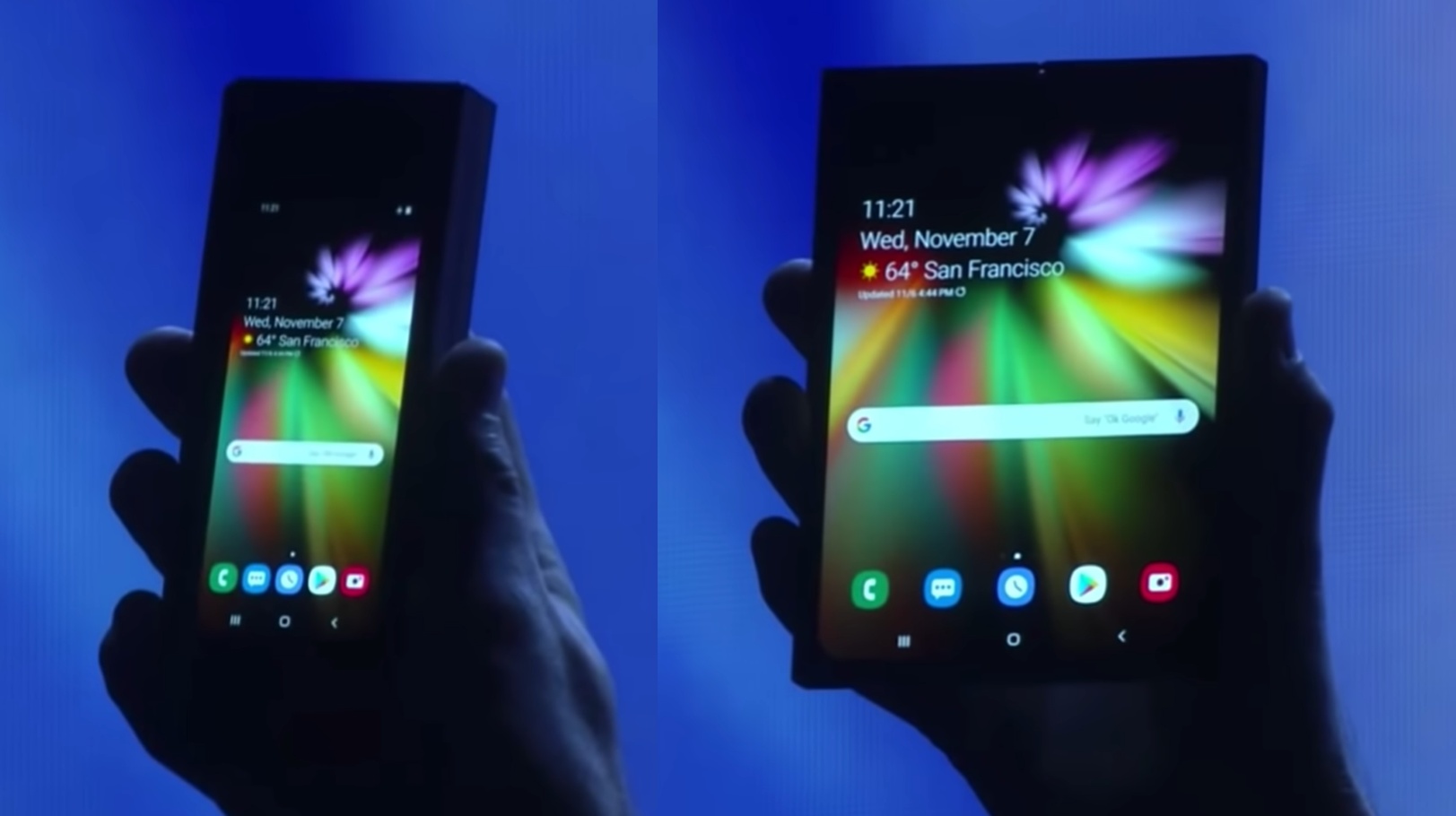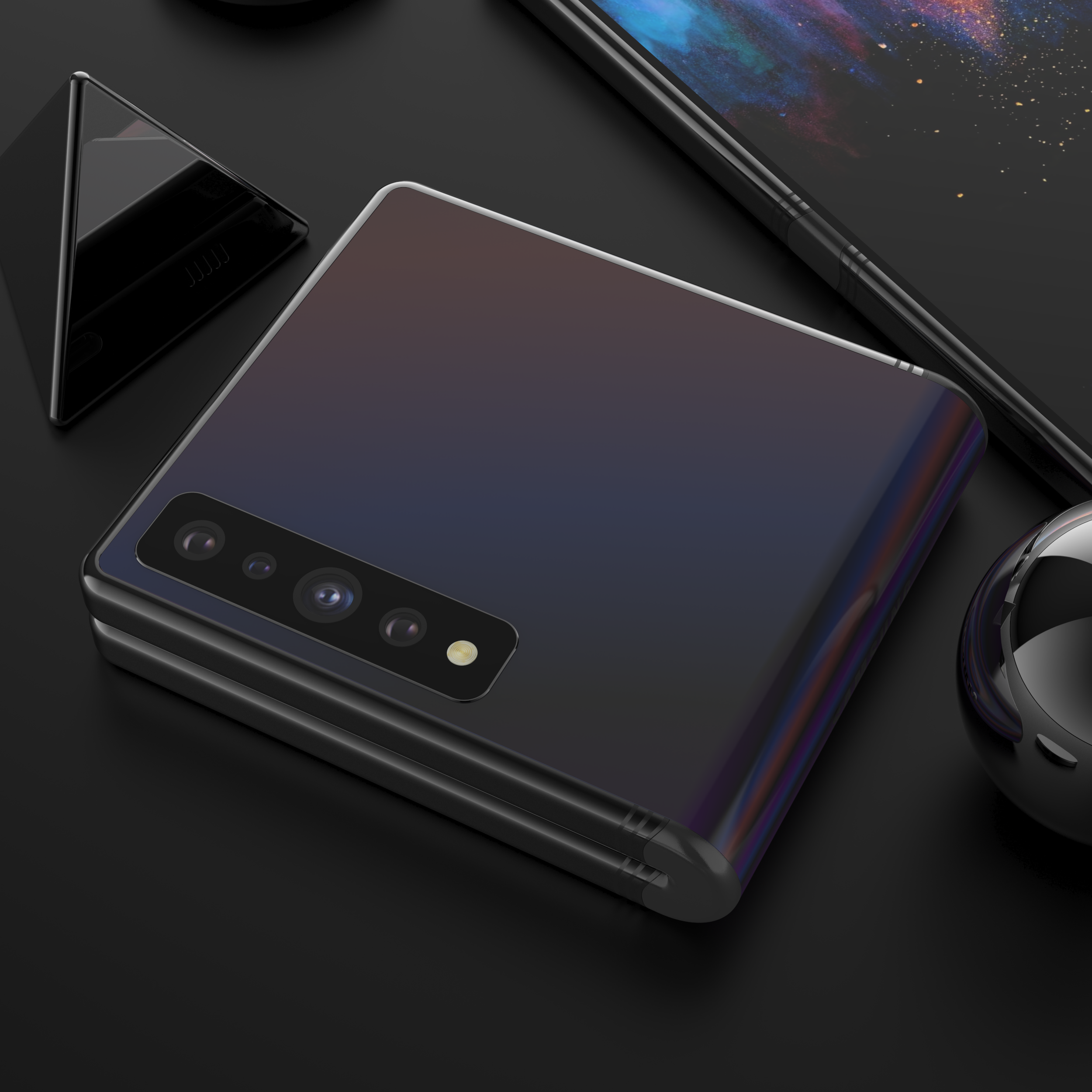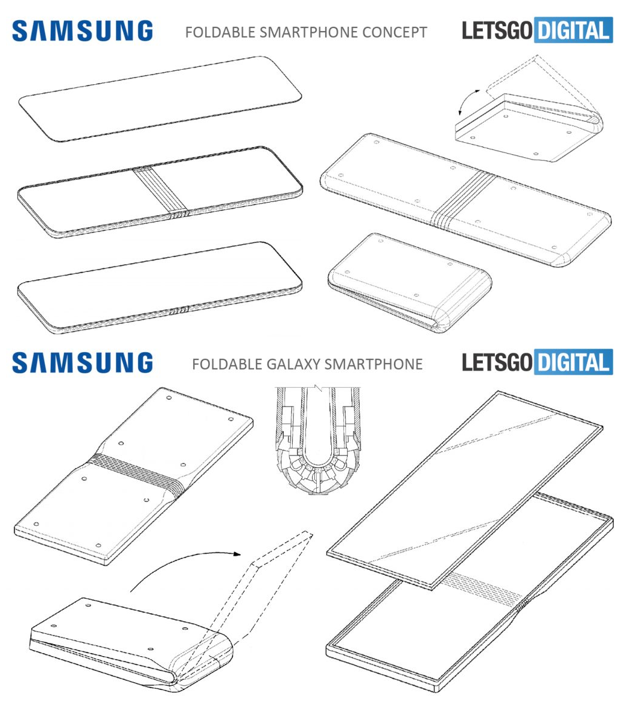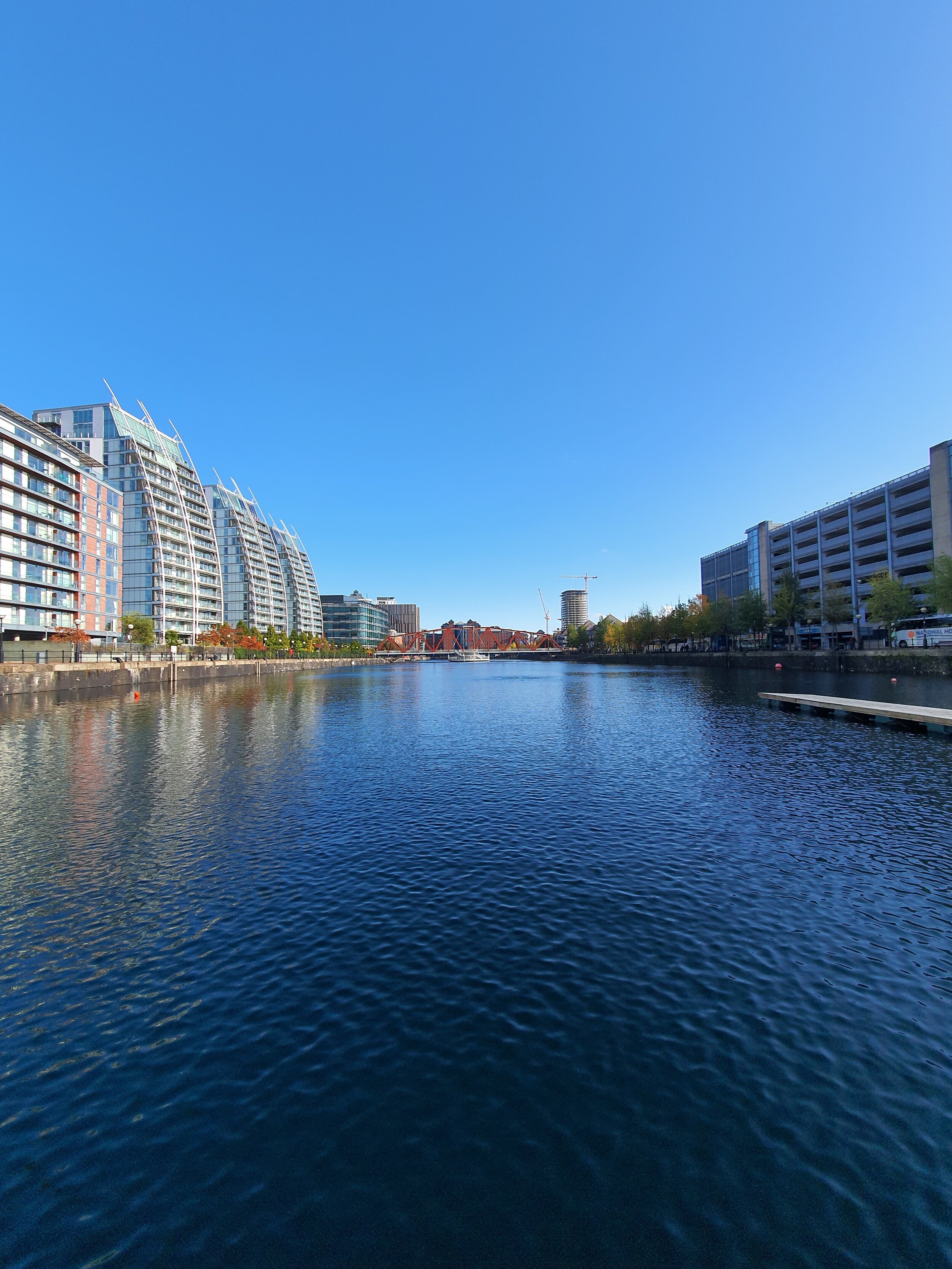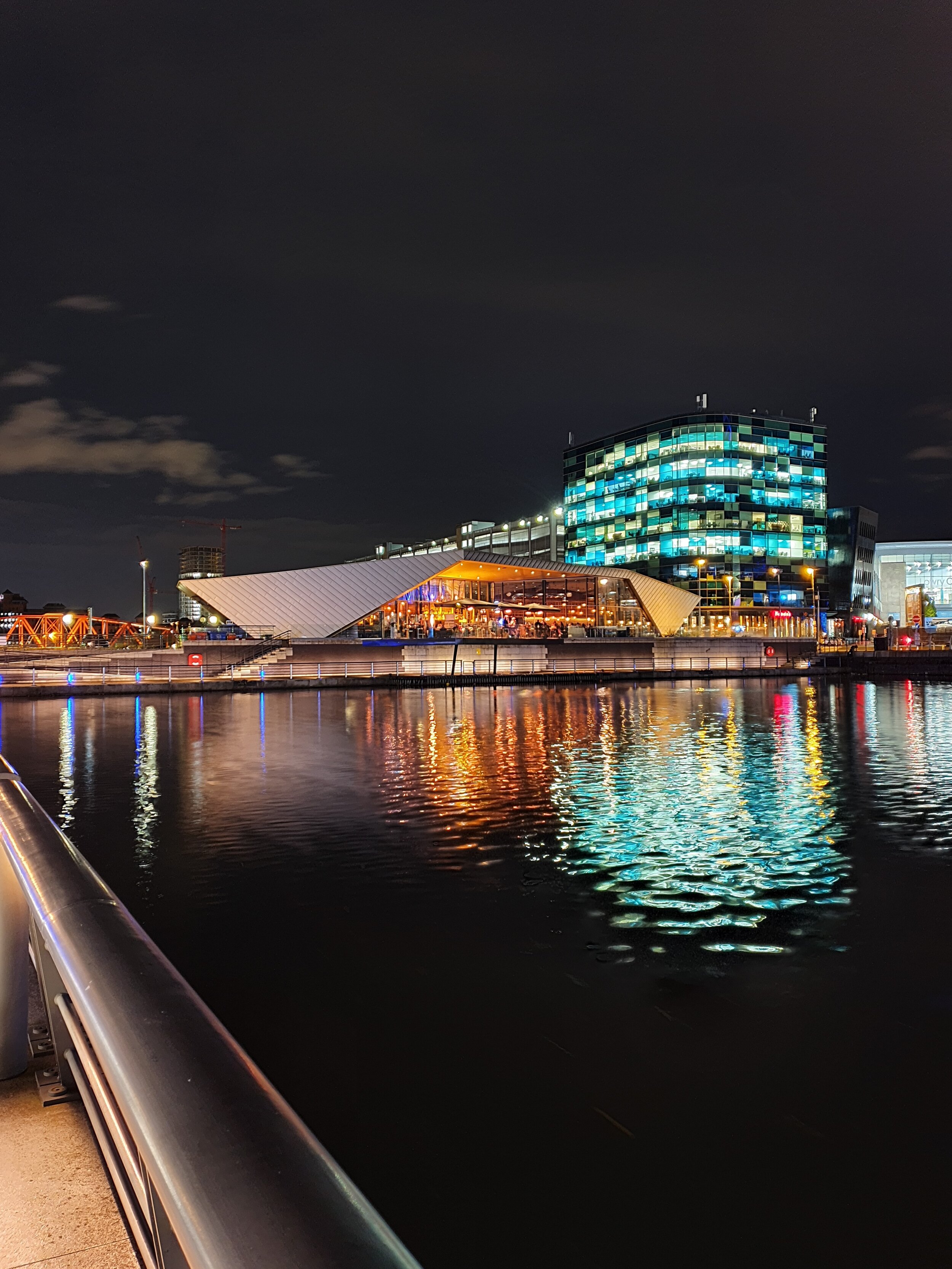Finally, we have a smartphone that ticks every single box! That Smartphone, is the S20 Ultra. It comes with:
A 108MP Camera, which has nine times the Resolution of the iPhone 11 Pro Max and most flagships Smartphones out there.
100X Space Zoom, when most Smartphones feature just 2X Optical or 10X Digital.
A massive 6.9”, 3200x1440, Ultra-Wide 20:9 Aspect Ratio Display with a 120Hz Refresh Rate, compared to the 60Hz of most other Smartphones.
It features the second largest Sensor on any Smartphone, right after the Huawei P40 Pro.
8K Video Recording.
A 40MP Front-Facing Camera.
A gigantic 5000mAh Battery.
45W Fast Charging.
15W Wireless Charging.
9W Reverse Wireless Charging.
An Always-On Display.
12GB of RAM.
Up to 1.5TB of Storage and you can even turn it into a Desktop PC, thanks to Samsung Dex.
The S20 Ultra is the god of all Smartphones and it is by far the most amazing Smartphone that I have ever used! Or at least…this is how I was hoping I would start this Review.
You see, the Galaxy S10 from last year was one of my favourite Smartphones ever. The S10 was so perfect for me, that I ended up using it as my daily driver for almost three full months, even replacing my iPhone for that period of time. Then, the Galaxy Note 10+ came out, which was an even more perfected S10, with an even bigger Display and an S-Pen. In my Review of the Note 10+, I even called it the best Smartphone ever made. I was honestly so happy with the Note 10+, just because it could do every single thing that I wanted from a Smartphone and more.
So, when I heard that the S20 Ultra would come out, with that insane 108MP Camera and 120Hz Display, I was just counting the days until this would release. We made so many videos on the S20 Ultra way before it was even announced, we made ‘Leaks & Rumors’ episodes, Concepts and I even attended the S20 launch event, which was my first ever Samsung event, and I was honestly so hyped about this Smartphone. I was eagerly awaiting the S20 Ultra launch. I don’t remember the last time I was so excited about a Smartphone, it was probably in 2017 when the big iPhone X launched.
However, rather than this being the ultimate Smartphone, as it looks to be, judging from the specs, it ended up being the most disappointing that I have ever ever used. On paper, they make this Smartphone look like it came from five years into the future. However, every single one of these specs has a major flaw and this Smartphone cannot deliver on any of its big promises. I’ve been using the S20 Ultra as my daily driver for the past month or so, so here is my full, honest Review of the S20 Ultra covering the Design, Display, Camera, Performance, Special Features, Battery and Value!
I mentioned that I finally attended my first Samsung event, I managed to see the unveil of the S20 line and the Galaxy Z Flip in person, which further sparked by insane hype about this Smartphone. After the event ended, just like everyone else, I was waiting for my Review Unit from Samsung.
The recent ‘Unpacked’ event was the first time we had attended an actual Samsung reveal.
However, while others started receiving very early units, we didn’t get anything. I kept being promised by Samsung that they would send one over as soon as possible, however, other channels, even smaller creators, got it, while we were left without a unit. About two weeks pass and most Reviews of the S20 Ultra started coming out already and pretty much all of them were very negative, which further crushed my hype for this Smartphone.
Now, Samsung did end up sending us a unit, so thank you Samsung, but that one actually arrived a full month after everyone else got it. It even got delivered at the exact same time as our Retail Unit of the S20 Ultra, which we bought and even that got delayed by an entire week, due to stock issues.
So, we got the S20 Ultra about a month after everyone else already posted their Full Review, seeing all of those negative Reviews and getting this so late pretty much killed all of my excitement. This is why we haven’t done a single video with the S20’s yet, just because we got it so late, compared to everyone else. But still, I wanted to make this Full Review, so I’ve put the S20 Ultra through its paces and here’s what I found.
Design
Design wise, from the front, the S20 Ultra does look outstanding. The Bezels are extremely thin, even thinner than on the S10 and Note 10. The Camera Cutout is now even smaller than before and it is now in the centre, just like on the Note 10. You honestly forget about it after just a few minutes and you just get impressed in that massive 6.9” Display.
Comparing it to the iPhone 11 Pro Max, the Ultra looks light-years ahead. It just looks so futuristic without that massive Notch and those extremely thin Bezels. The back, however, isn’t as pretty. That’s not necessarily because of that massive Camera Module, but mostly because of the colours, we only get Grey and Black colour options. The Grey is just a regular Grey so nothing really too special here, but the Black is actually pretty bad. There’s no shimmer to it or anything, it’s just a fingerprint magnet. It actually reminds me a lot of our fake Galaxy mock-ups. It looks so much like cheap plastic. Samsung used to have some amazing colours with the Note and S10 last year but for some reason, those didn’t translate to the Ultra. Not only that, but most Smartphones in 2020 started adding a Frosted Glass back.
The Ultra is very bulky, even without that mammoth Camera Module.
The iPhones have it, the Pixels have it, OnePlus has it, Huawei has it with the P40 Pro and many others do as well. A Frosted Glass back not only makes it look so much better, but it removes the issue of fingerprints and smudges almost entirely. I’m quite surprised that Samsung still hasn’t done that.
Now, leaving the back aside, there are three design issues that I really do have to mention, the first one being the table wobble. So, because of how massive and deep this Camera Module is, you’ll notice that when the Ultra is sitting flat on the table, it will wobble like crazy. If you’re the kind of person that likes using your Smartphone when it’s sitting flat, you can forget about that with the Ultra.
Secondly, the Ultra is very thick at 8.8mm for just the body alone, not even to mention the Camera Module. The Ultra is pretty much the thickest non-folding, flagship Smartphone on the market right now. If you add a case, to remove that table wobble issue and flatten out the Camera Module, it will make this Smartphone even thicker.
Lastly, this Smartphone is also pretty heavy. At 222g, it is one of the heaviest Smartphones on the market and while it’s actually 4 grams lighter than the iPhone 11 Pro Max, it does feel top heavy to me. I always feel like I’m about to drop this Smartphone and that Camera Module is so big that you’ll always end up touching it. So, great design on the front, but a very bulky and big Smartphone overall.
Display
Moving on to the Display, we now get a massive 6.9” Display, up from the 6.7” Panel that the S10 5G had, or the 6.8” Display that the Note 10+ had. But, this size increase is mostly due to its extra height. We now have a taller 20:9 Aspect Ratio, compared to 19:9 like we had before, it actually doesn’t feel as big as you would expect. In fact, the entire Smartphone is not as wide as the Note 10+ was, meaning that, compared to the Note, it is actually more comfortable to use. I really do like this.
This is a very high quality Display, but it has some notable limitations.
Also, the Glass is almost flat now, Samsung pretty much killed their ‘Edge’ Display with the S20 line. Design wise, I do prefer the Note 10+ over the S20 Ultra. Also, thanks to the flatter Display, there are no more accidental touches at all with this Smartphone, so Samsung definitely gets a plus for that. Resolution wise, we get a 3200x1440 Resolution Display, which translates to 511PPI. The Colour Reproduction is excellent and the Brightness is very good, maxing out at 1300 Nits. So overall, the S20 Ultra has one of the highest quality Displays in a Smartphone.
Now, aside from the Resolution and Aspect Ratio, something else that’s new this year is the Refresh Rate. We now get a 120Hz Display, compared to the 60Hz Panel that we got before. This means that the S20 Ultra can now Display up to 120FPS, compared to 60FPS like on most other Smartphones. Not only will games run twice more fluid on the Ultra, compared to let’s say, the iPhone 11 Pro Max, but animations, scrolling and just using the Smartphone in general will feel so much snappier than ever before.
But, this is where the first main disappointment with this Smartphone kicks in. Unlike the OnePlus 8 Pro for example, which runs at 120HZ at full Resolution, the S20 Ultra can only run at 120Hz when the Display is in 1080p. This wouldn’t really be an issue if this Display was any smaller but, on a massive 6.9” Display, 1080p will make the text look a bit blurry. So, you’ll have to choose, you’ll either want a fluid but blurry experience, or you’ll want a not so fluid but sharp experience. There’s always a trade-off.
Also, OnePlus for example, added a 10-bit Display Panel on the 8 Pro, which can display over 1 billion colours, compared to the 16 million colours that the S20 Ultra can display. OnePlus also added an MEMC Chip, which adds extra frames in videos, bringing them to 120FPS from 30FPS for example. So, even though OnePlus actually uses a Samsung Display, it seems like it is a higher quality Panel than what Samsung themselves have put in their highest-end Smartphone.
Camera
So, speaking of disappointments, let’s talk about the biggest one there is and that is…the Camera.
Where do we even start?
About a month before the S20 Ultra was even announced, we made a video called “S20 Ultra – Why I’m concerned”, in which I talked about why that 108MP Sensor that the S20 Ultra will come with, might not be a great idea. My point here was that a Camera Sensor is just like a chessboard, it’s a fixed area, inside of which you have multiple squares. These squares are actually the Pixels on the Sensor. The larger the Pixels are, the more light they can capture. Now, if you want to add multiple squares, nine times the amount of squares in the case of the Ultra, they will have to become nine times smaller in order for all of them to fit. This means that they will capture nine times less light and long story short, the Camera would be very bad in Low-Light.
To combat this issue, Samsung increased the chessboard size, or the Sensor size in this case, from 1/2.55” like we had on the Note 10+, to 1/1.33”. This was a massive increase, pretty much double the size. This was a pretty big deal for Samsung as we hadn’t had a larger Sensor since the Galaxy S7 in 2016, Samsung had been using the exact same Camera specs. The only problem, and this is where my scepticism was regarding this Camera, was that the Xiaomi Mi Note 10 also used the same 108MP Sensor from Samsung. It is the same size, has same specs and this is a mid-range Smartphone that costs three to four times less than the Ultra. That 108MP Camera inside of it wasn’t great either.
Photos were indeed sharp, but only when the Camera had a ton of light. If you didn’t have tons of sunlight, the Camera was pretty bad. Now, Samsung did claim that they were doing something a bit different on the Ultra, where they would actually combine nine Pixels on the Sensor, into one, for much better Low-Light performance via something they called ‘NonaBinning’. But, I just wasn’t buying it. The Pixels on the Sensor are still 0.8 Microns in size, compared to 1.4 Microns on the Note 10+ for example. So, the Pixels were almost twice as small. That video of me being skeptical about the Samsung Camera before release got quite a lot of dislikes and I’m sorry to tell you but…I was right.
The Variable Aperture Module is a notable loss on the Ultra.
Even with Samsung’s ‘NonaBinning’, this Camera just isn’t great at all. Low-Light performance is noticeably worse than the iPhone 11 Pro Max, or even the S10 from last year. Low-Light shots on the Ultra, as I expected, are very bad, they are extremely noisy and unfortunately video performance in Low-Light is even worse. As a video is essentially a sequence of 30 or 60 photos every second, the Processor isn’t fast enough to reduce the noise in real time, so video ends up being even noisier than the Low-Light photos. Low-Light video just falls apart entirely on the Ultra because of those extremely tiny Pixels on the Sensor.
Remember that really cool Variable Aperture Module, the f/1.5-f/2.4 Module that the S9 introduced? Well, that’s now gone and all we’re left with is a fixed f/1.8 Aperture Module, which is another reason why this Smartphone does not excel in Low-Light.
So pretty bad Low-Light performance but, the day-time performance should at least be good, right? Unfortunately, that’s pretty bad as well. The HDR Processing on this Smartphone is close to non-existent, Shadows get completely crushed and Highlights get blown out almost every single time. I don’t remember the last time we had a Smartphone that was this bad in terms of HDR Processing. These photos remind me of pre-HDR Smartphones from around 2012-2013 or so.
The Ultra makes the Moon look like it really is made of cheese.
Also, the Ultra doesn’t really take 108MP photos. All of the photos that you take are using that Pixel Binning/NonaBinning merge that I talked about before, so they’re all 12MP photos unless you have the 108MP Mode specifically enabled. While the 108MP photos do look very good, the HDR Processing is actually even worse on the 108MP photos, things are definitely not looking great for the S20 Ultra’s Camera. Something has to be good about this Camera, what about that 100X Zoom or at least the 8K video?
Samsung is using a Periscope Camera inside the Ultra, which is a genius solution of putting a Telephoto Lens inside the thin body of a Smartphone, they actually positioned the Telephoto Camera to the side and they’re using a mirror to direct the light onto the Sensor. But you don’t get 100X Optical zoom, that would really be ridiculous. Instead, you get about 4X Optical Zoom, which is really only twice the Zoom level of the iPhone 11 Pro Max for example, and then the rest of the Zoom is all Digital, thanks to the 48MP Resolution of the Telephoto Sensor and that 108MP Resolution Main Sensor.
Long story short, 10X Hybrid Zoom on this Smartphone is actually pretty impressive, the 30X is OK but I wouldn’t really use it on an Instagram Post. Anything more than 30X, especially 50X or 100X, is borderline unusable. Images end up looking like Oil Paintings and Samsung should’ve really marketed this as 10X Zoom, rather than literally printing 100X Space Zoom on the back of the Smartphone, this would’ve been so much better received. But instead, Samsung hyped this Smartphone up so much to the point where the 100X Space Zoom is pretty much a meme.
I was a bit sceptical when, at the event, Samsung didn’t show us a single photo of the night sky or at least the Moon, even-though the branding on this camera was 100X Space Zoom.
Printing that on the Ultra may not have been the best idea.
Now, there are two more things that I want to mention regarding the Zoom Camera. The first one being that if you just want to use the Telephoto Module, the Standard Zoom is now 5X, so if you want to Zoom in just a bit, that would be Digital Zoom and not Optical. Portrait Mode is now done with the Main Lens because of that. Secondly, the Telephoto Module is actually a very slow Lens now. It is an f/3.5 Aperture Module, which combined with the fact that it is a 48MP Sensor, explains why this Module is pretty much unusable in Low-Light, or any light that’s not direct Sunlight.
So, what about that 8K video? It’s pretty sharp but it is only at 24FPS and I have a feeling that sometimes it even drops below that, just because it does look pretty choppy every now and then. The HDR Processing is again very poor in this Mode and the Bit-Rate is quite low as well. After the recent updates, it is now around 50-70Mb/s, but for 8K video, you would expect that to be much much higher, at least 150Mb/s, considering that the Storage inside the S20 Ultra is indeed capable of this. But, just to make matters worse, the focusing on this Smartphone is one of the worst I’ve seen in years. First of all, the S20 Ultra, because of that massive Sensor, now lacks the incredible Dual Pixel Autofocus that we’ve had on Samsung Smartphones for years. We just have Phase Detection Autofocus, which is quite slow.
The problem here is that when recording video, it focus hunts a lot. Getting a focused subject with this Smartphone is quite tricky. On top of this, based on how big the Sensor is, and while you do get some incredibly natural Depth of Field straight from the Camera’s hardware, this only makes the Focusing issue even worse. Now, close-ups would look incredibly blurry when compared to other ones.
You still get a whole lot with the regular S20 (Shibe not included).
Also, aside from Focusing, Low-Light and HDR issues, something else that got a downgrade is Slow-Motion. We no longer get Samsung’s iconic 960FPS Slow-Motion, this is now just 480FPS on the Ultra and then digitally enhanced up to 960FPS. Fun fact, the regular S20 and the S20+ don’t have any of these issues. They still have a 12MP Main Sensor, which is also larger than last year, but Low-Light performance on those is just incredible because the Pixels themselves are not as small as on the Ultra. Autofocusing works just fine because we still have Dual Pixel Autofocus and we still get a massive 64MP Sensor as the Secondary Camera, which you can also use to take full 64MP photos.
So, the S20 and S20+ do have a much better Camera than the Ultra, ironically. It’s just that you’re missing out on that 4X Optical Zoom and instead you now just have Digital Zoom all around. The only actual Camera improvement that the S20 Ultra gets over the other S20’s, is when it comes to the Front-Facing Camera. This is now a 40MP Sensor, up from the 10MP Sensor that we have on the other S20’s, and the selfies on this are razor sharp but aside from that, this is pretty much it.
Now, I do have to give props to Samsung for releasing a ton of software updates on the Ultra, which did improve the Camera. But, at the same time, issues such as the Autofocusing or Low-Light performance are hardware limitations of that massive 108MP Sensor, which won’t be fixable through software updates.
Performance
Ok, the Camera is a disappointment. Ironically, this was supposed to be the biggest feature of this Smartphone. But now, what about the performance?
Well, just like the years before, there are two different models of the S20 Ultra. If you buy one from the US, Canada or South Korea, you get the Snapdragon 865 Processor, which is the most powerful Processor in an Android Smartphone right now. But, if you buy it from anywhere else, you’ll get Samsung’s own Exynos 990 Processor inside. While on paper they look almost identical, they’re actually not.
Long story short, there is now a massive difference between these two Chips, not just in terms of overall performance but also in terms of the Battery Life. Unfortunately, for most people, the Exynos model is actually the bad one.
If you’re in the US, Canada or South Korea, you will be getting the higher-end Processor.
Arun, or ‘MrWhoseTheBoss’, compared the two side-by-side. There, he found that the Snapdragon model was up to 20% faster. Not only that, but the Camera performance is also better on the Snapdragon variant, thanks to an improved Image Signal Processor. This is weird because if anything, the Exynos model should’ve had the best Camera performance as that’s a Samsung made CPU and that 108MP Sensor is also a Samsung made Sensor. Arun also found that the Battery Life was up to two hours longer on the Snapdragon model. So, to make matters worse, the Exynos variant is pretty much the nail in the coffin here.
My experience, performance wise, with the Ultra has been great, I do have to mention that. Those 12GB of RAM and that UFS 3.0 Storage, combined with that 120Hz Refresh Rate, make it one of the fastest Smartphones I’ve ever used. Still, the OnePlus 8 Pro felt much smoother and more responsive.
Special Features
Moving on to the special features, the biggest one here is probably the new Haptic Engine. This is now the same one that Samsung used in the Galaxy Note 10+ last year and it is brilliant. I do find Samsung’s implementation of Haptic Touch in the OS to be the very best on any Smartphone out there. You get these small tap backs when you go into the Settings, take a photo or even when you type on the Keyboard. It’s just incredible. But other than that, there’s really nothing extra that we get from the Note.
The Always-On Display is still there, as is Reverse Wireless Charging and pretty much all of the features that you would expect from a Smartphone. We now we get 5G as well, this is mmWave 5G. Aside from the S-Pen, this Smartphone has the most features of any Smartphone on the market. It’s just too bad it’s lacking on the essentials.
Battery
On my Exynos model, with my use-case, I was getting around five hours of screen-on time, which isn’t great. This was with 120Hz enabled, but do keep in mind that this was on 1080p Resolution. That was similar to the Battery Life that I got with my S10+ after about two months, or so, of use. It’s fine, but it could be so much better.
Value
Having said all this. Is the S20 Ultra worth it? If this thing was $800/£800, maybe. But, it’s actually $1400, or £1200.
At that price point, the Ultra is now the most expensive non-foldable Smartphone on the market that you can buy. Also, this is just for the baseline 128GB of Storage model and you don’t even get a Case inside the box. Well, you get one in the US but not in the UK, which for this price, this really sucks. You don’t even get the USB C to USB A Adapter anymore, so you’re actually getting less than what you got with the S10 last year.
When an iPhone SE, which costs $400, more than three times less, takes better photos that a Smartphone that’s supposed to be the Camera King, I’m sorry but no one should be buying the Ultra. However, the regular S20 is actually a very good deal. At $900, you get a better Camera than the Ultra and you also get most of the features that the Ultra has.




